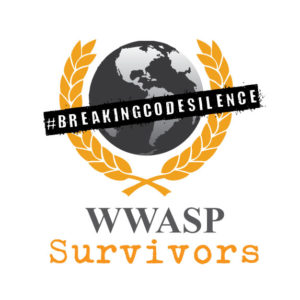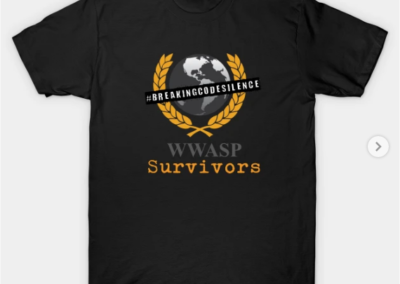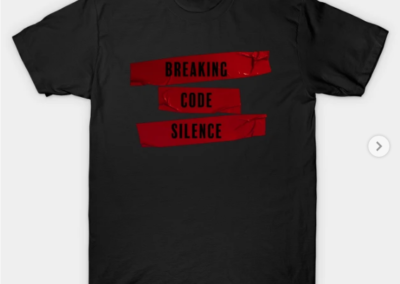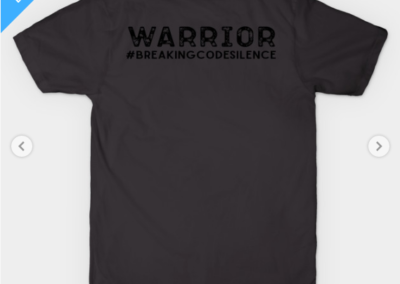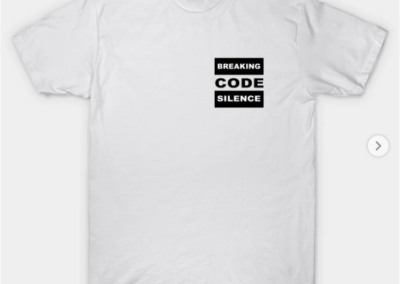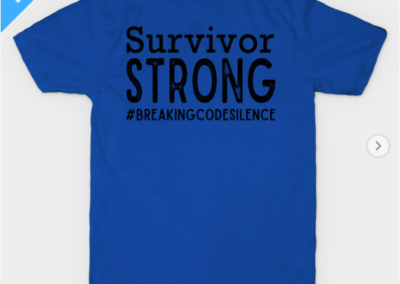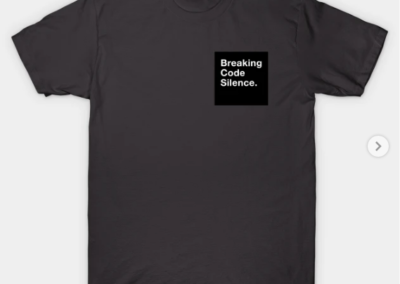In this post, we will go over the testimony of lead DHS Agent Joe Lestina. The full testimony will be linked at the bottom of the page below our highlights.
The sexual abuse victim took some time to open up which is 100% common in cases like of trauma and sexual abuse. The DHS agents established trust with her and she slowly told them over a couple days. She was consistent in her story and when she was asked to write a witness statement, it was consistent with what she had verbally told Agent Lestina.
Q. All right. So let’s go back a little bit. [sexual abuse victim] is pulled out of the school; she’s now sitting at the Sheriff’s office. Where do you take her to speak with her?
A. We took her into one of the local Sheriff’s office interview rooms.
Q. Did you sit her down and say, well, tell me what happened, or did you do some things to build some rapport with her?
A. No, ma’am. One of the things that we attempt to do in every victim -centered interview is we really just try to let the victim know that everything is on their terms, letting them know that we don’t make any promises about the way things will occur if any information is r eleased or not released. We just really allow them to make all of the decisions with their disclosure. And in that situation, I just began to build rapport with [sexual abuse victim] and speak to her about things that were not quite as invasive in an attempt to get h er to disclose the information that she previously stated.
Q. How was she with you at first?
A. She was extremely resistant to providing information about anything related to the allegations.
Q. Was she responsive to you?
A. She did respond to me when we were talking about general things about the academy, things like the structure of the academy, how things worked, kind of the inner workings of everything in her day – to-day life at the academy. She was fairly willing to discuss those items.
Q. But then at some point if you would turn to some of the more invasive -type questions about what had happened with the Defendant, did she tend to shut down some?
A. She did.
Q. Over time, and taking your time with her, did she seem to become more comfortable?
A. Yes, she did.
Q. Do you know, how long did it take for her to open up to you about the sexual assault?
A. It was well over two hours and forty-five minutes before she started to talk about her initial statement that she had made. And then it was much later than that when she actually started getting into details of the sexual abuse.
Q. How long were you with her that night?
A. We spent approximately four hours with her the first night on December 1st.
Q. You started at–you said it was about 8 o’clock p.m.?
A. Yes, ma’am.
Q. So you talked up until midnight then?
A. Yes, ma’am.
Q. By midnight were you done with your interview?
A. No, ma’am.
Q. What did you decide to do?
A. Myself and CPW Webster, we decided to take a break because we knew that i t had been a very long afternoon for her, and we wanted to give her the opportunity to get some rest so that we could continue gathering information on her timeframe the next day.
Q. So did you meet with her the next day?
A. Yes, ma’am.
Q. Where?
A. At the Lee County Sheriff’s Office.
Q. When?
A. We met at approximately 12:00 to 1:00 in the afternoon the second day.
Q. You continued speaking with [sexual abuse victim]?
A. Yes, ma’am.
Q. Did she continue to open up some more to you?
A. Yes, she did.
Q. Did it still appear to you that she was having difficulty talking to you?
A. Yes, ma’am. There were times where she would completely stop talking, and she began to be very closed off. And she would do things like put her head down, look away for long periods of time. And that was one of the things that I understood that she was having a very difficult time speaking about the information.
Q. You took your time with her?
A. Yes, ma’am.
Q. How long did that interview last that day?
A. It was approximately four hours as well.
Q. At the end of the four hours, did you feel that you had full information, or did you want to speak with her more?
A. No, ma’am. I didn’t feel that we had full information, because she had only begun to discuss very basic details. Although she continued to disclose throughout the interview, it just appeared that there was much more that she wanted to talk about but she was having difficulty.
Q. So over the next several days, did you speak to [sexual abuse victim] several times?
A. Yes, ma’am.
Q. How many?
A. We spoke to her on December 1st, December 2nd, and December 3rd. We also spoke to her again on December 7th and December 8th.
Q. Was [sexual abuse victim] staying in Keokuk during that time?
A. Yes, ma’am.
Q. Now, in your training and experience with sexual assault investigations, is that abnormal for someone reporting a sexual assault to have difficulty talking about it?
A. No, ma’am. It’s very normal with the way the victimology works, and every victim is different.
Q. Is it abnormal that persons sometimes, and not even just a sexual assault, but any type of witness to a crime that was maybe traumatic, that it takes them time to bring out details, and it may be a day or two days or sometimes a week or more when different details come out?
A. Based on my training and experience, everybody is different on how quickly they can provide information. That’s correct.
Q. All right. Due to the difficulties that [sexual abuse victim] was having, did you at some point ask her to write out a witness statement?
A. Yes, ma’am.
Q. Did that seem to work better with her?
A. It did.
Q. So you had done a lot of discussions with her, and then you also had her write out a witness statement; correct?
A. That is correct.
Q. And was the written statement consistent with what she had been verbally telling you?
A. Yes, ma’am.
Q. All right. During your time with [sexual abuse victim] over these days, did she disclose that the Defendant had sexual contact with her?
A. Yes, ma’am.
About a month after the sexual abuse victim was take out of Midwest Academy, Agent Lestina had the victim send a pretext text message and phone call to try to get Ben Trane to talk. He never responded or picked up the phone but this is important because later in his testimony, Ben tried to claim that her texting and calling him showed that she was harassing him. He knew at the time she was calling and texting what they were investigating him for and he testified after Agent Lestina so he knew that those texts and calls were at his instruction.
Q. After [sexual abuse victim] left, you’re doing this groundwork for your investigation. Was there a point in time that you had decided that you wanted to go speak with her again?
A. Yes, ma’am.
Q. Why is that?
A. I felt that [sexual abuse victim] had additional information that she wanted to provide, but there was also additional investigative steps that we wanted to complete with her.
Q. So did you go see her?
A. Yes, ma’am.
Q. When was that?
A. January 12, 2016.
Q. Where did you meet her at?
A. We met her at the University of Minneapolis (sic) Police Department.
Q. Who went there?
A. Myself and CPW Beth Webster.
Q. During your time with her in Minnesota, did you ask her to do a pretext phone call?
A. Yes, ma’am.
Q. What is a pretext phone call?
A. A pretext phone call is an investigative technique that law enforcement uses to have victims contact defendants in the attempt to gather information that would be able to substantiate or unsubstantiate allegations.
Q. Did [sexual abuse victim] agree to do that?
A. Yes, ma’am.
Q. So what did you ask her to do?
A. I started to ask [sexual abuse victim] if she would text the Defendant to see if we would be able to receive a response to a texting.
Q. So [sexual abuse victim] had the Defendant’s personal phone number?
A. Yes, ma’am.
Q. So did she text him?
A. Yes, ma’am.
Q. Was there any response?
A. No, ma’am.
Q. What else did you ask her to do?
A. Once we didn’t receive a response via text, I asked [sexual abuse victim] if she would leave a voice mail or attempt to call the Defendant.
Q. Did she do that?
A. She did.
Q. Did she actually speak with the Defendant or just leave a message?
A. She just left a voice mail.
Q. And was there ever any response to the voice mail or the text?
A. No, ma’am.
Q. And at this point it’s January 12, 2016; correct?
A. That is correct.
Q. [sexual abuse victim] was taken out of school December 1st of 2015?
A. That is correct.
Q. And was it your understanding that
the Defendant was aware of the allegations
that she had made against him?
A. Yes, ma’am.
The FBI and DHS workers executed their search warrant on January 28th, 2016 – over 50+ days after the victim was removed from the school. They removed the students from the living area and placed them in the gym so they could search unobstructed. They originally did not plan on interviewing the students but that changed after they found one boy had secured another boy in OSS.
Q. We’ve had a few descriptions about what the search was like in limited areas. But you were the case agent on this; correct?
A. Yes, ma’am.
Q. So can you give us just a broad overview of what was going on when you arrived and what was happening after you were there?
A. Yes, ma’am. The initial things that we wanted to do is we wanted to remove personnel, staff, and students from any areas that we felt were probative to our investigation, or an area where we were going to conduct our specific searches. That would include the Defendant’s residence, his offices, as well as the seminar building. So what we did is we sent in a team of law enforcement officers to work with staff to be able to remove the students from those areas to allow us free access to the facility.
Q. When you first went to Midwest Academy that day, did you intend on interviewing all of the students?
A. No, ma’am.
Q. Did that change at some point during the day?
A. Yes, it did.
Q. Why?
A. While we were at the facility, our original intent was to conduct a sexual abuse scene examination as well as interview anybody that would have had contact with Kxxxxxx. And in the process of doing that, there was an incident on the boys’ wing where students had actually secured another student and placed him in the OSS room. And knowing the background as to the FBI’s involvement and as to why we were there earlier in 2015 –excuse me– Why the FBI was there earlier in 2015 was the use of the OSS rooms, and it was brought to our attention that we may need to conduct interviews of other students to find out if they felt safe.
Q. And so a decision was made to do that?
A. Yes, ma’am.
Q. That lengthened your day, obviously?
A. Yes, ma’am.
They did find a camera that matched the description that the victim had given them. The camera did not have any built in storage and they could not find an SD card that contained a video of her. This was not entirely surprising though since the victim had been removed 50+ days earlier and Ben Trane knew what he was being investigated for. If there were incriminating SD cards, he would have had enough time to destroy them before the search warrant was executed.
Q. Now, during your interviews with [sexual abuse victim], had she mentioned a particular — or described to you a camcorder or a recording device?
A. Yes, ma’am.
Q. Was that one of the things you were looking for?
A. Yes, ma’am.
Q. And was that based on her description?
A. Yes.
Q. Did you find a cam corder that was similar in description to what she had told you during the search?
A. Yes, ma’am.
Q. Where did you find that?
A. Our crime scene team and our search team found that in Mr. Trane’s residence, the bedroom of his residence.
Q. Do you know what type of camcorder it was?
A. It was a Canon.
Q. Describe it to us, please.
A. It’s approximately the size –a little bit smaller than my hand, and it would be grayish -black, dark in color, and it’s very small, very slim.
Q. What media was used in that camcorder to make it work?
A. That specific brand used an SD card to be able to record onto it.
Q. What’s an SD card?
A. An SD card is a very small –it’s approximately the size of a quarter. But it’s a very small media that you can find in things like cameras as well as camcorders and just any type of recording devices.
Q. It’s just like a small, little flat square; is that right?
A. Yes, ma’am. It’s very small.
Q. Did the camcorder have an SD card in it?
A. Not that I recall.
Q. Did the camcorder have its own internal memory where recordings were saved on the actual camcorder?
A. That model did not.
Q. So you had to have a card; correct?
A. That is correct.
Q. Now, during the search you collected some SD cards; is that right?
A. Yes, ma’am.
Q. From any of those SD cards, did you find a recording of [sexual abuse victim]?
A. No, ma’am.
The sexual abuse victim’s description of Ben Trane’s home was consistent with what the agents found.
Q. During [sexual abuse victim]’s interview with you, did she describe an occasion when she was in the Defendant’s home?
A. Yes, she did.
Q. Did she provide you a description of the Defendant’s home?
A. Yes, she did.
Q. Was her description consistent with what you observed when you entered the Defendant’s home?
A. Yes, it was.
The decor of OSS was different between the boys and girls wings.
Q. When you did the search of the academy, were all the doors on the OSS rooms?
A. I don’t recall the specific configuration, but I know that there were at least several of the rooms that had doors on them.
Q. And did those doors have –were without handles on the inside?
A. That’s correct. The doors could not be opened from the inside.
Q. Now, you said the girls’ OSS rooms were a little bit bigger than the boys’; correct?
A. Yes, ma’am.
Q. When you were at the academy, did you notice the difference, just in general décor, did you notice a difference between the boys’ side and the girls’ side?
A. Yes, ma’am. There was a slight contrast with even the colors. It was kind of white to grays in the boys’ wing, and there were very minimal furnishings. And then on the fem ale side, there were quite a few more colors, and they had motivational phrases and artwork on the walls. So there was a pretty stark contrast between the two different sides.
There were no cameras in the areas of the school where the alleged sexual abuse occurred.
Q. What about cameras? Did you observe where cameras were throughout the school?
A. Yes, ma’am.
Q. At first glance did it appear like there was a lot of cameras in a lot of different places?
A. Yes, ma’am.
Q. Were there any cameras in the sleeping rooms?
A. No.
Q. Were there any cameras in the hallways of the sleeping rooms?
A. No.
Q. Were there any cameras in the seminar room?
A. No, ma’am.
Q. Were there any cameras in the upstairs seminar room?
A. No, ma’am.
The authorities got another search warrant and went back to retrieve the cameras and equipment and the OSS logs.
Q. All right. Following the January 28th search, was a decision made for law enforcement to return to the school?
A. Yes, ma’am.
Q. Why?
A. At the time we did our search, we weren’t sure what type of surveillance cameras there were. And it was decided that we would leave those surveillance cameras that were in place, in place for the protection of the staff as well as students while there were students there. We felt it would be –it wouldn’t be a very good idea to remove those cameras from the facility. And so at that time we just chose that we wouldn’t do that. But then we also conducted additional student interviews that highlighted other areas that we now became focused on in an additional investigation, and so we also included additional paperwork that we were looking to seize that may show lengths of
time somebody may have been placed in OSS. I think they’re called OSS logs. And so we had a general idea of other things that we were looking at in regards to our investigation.
Q. So you went back and you were looking to retrieve some of the cameras and equipment and also student records; correct?
A. Yes, ma’am.
Q. And what day was this second search conducted?
A. That was February 1, 2016.
The phone call logs on Ben Trane’s phone line up with the victim’s testimony to show when she spoke to her sister and the dates of the sexual abuse.
Q. Was there a particular date that you wanted to look at the calls on the Defendant’s phone?
A. Yes, ma’am.
Q. What date was that?
A. That was October 13, 2015.
Q. Why did you want to look at that date on the Defendant’s phone?
A. [sexual abuse victim] stated that was the date that she had gone to Quincy with the Defendant. And that’s the date that she was allowed to contact her sister using the Defendant’s phone.
Q. So through the Cellebrite report, were you able to determine if that particular phone call was made on that date?
A. Yes, ma’am.
Q. What did you find?
A. I found that on October 13, 2015, at approximately 12:18 p.m., there was a one hour and forty-two minute and forty – three second phone call made from the Defendant’s phone to [abuse victim’s sister] at telephone number xxx-xxx-xxx
Q. Now, that Cellebrite report doesn’t say the Defendant called [abuse victim’s sister]; correct?
A. No, it does not.
Q. So how do you know that that number called belongs to [sexual abuse victim]’s sister, [abuse victim’s sister]?
A. I had personally reached out to [abuse victim’s sister] on this telephone number and had conversations with her using that telephone number.
Q. And again, how long was that phone call?
A. The phone call was one hour and forty-two minutes and forty-three seconds.
Nine photos of the sexual abuse victim were found on Ben Trane’s phone. She was trying to hide her face in almost every photo according to Agent Lestina’s testimony. Most were taking around the time that the victim said was being sexually abused (October/November 2015)
A. Yes, ma’am.
Q. Exhibit 63. Were you able to identify [sexual abuse victim] in this photograph that was on the Defendant’s
A. Yes, ma’am.
Q. Use your pointer and show the jury where that’s at?
A. [sexual abuse victim] is sitting here (indicating) with her right hand over her eyes, her left hand on the book.
Q. Exhibit 64. Does this appear to be another series of photographs that was connected with 63?
A. Yes, ma’am.
Q. And again, point out where [sexual abuse victim] is at.
A. [sexual abuse victim] is sitting on the right – hand of the screen (indicating) with her hand completely covering her face.
Q. What time was this photograph taken?
A. This photograph was taken approximately 7:41 p.m.
Q. On which day?
A. October 7, 2015.
Q. Exhibit 65. Were you able to
identify [sexual abuse victim]in that photograph?
A. Yes, ma’am.
Q. When was this photograph taken?
A. This photograph was taken November 14, 2015, at approximately 7:02 p.m.
Q. And again, through your interviews with [sexual abuse victim] , is it your understanding that by November she was upper level and able to go out on outings off campus and things like that?
A. Yes, ma’am.
Q. Okay. And please point out where you see [sexual abuse victim] in this photograph?
A. [sexual abuse victim] is on the left-hand corner of the screen (indicating). Her face is partially obstructed, and she’s wearing a multi-colored shirt
Q. Exhibit 66. Is this in the same series as 65?
A. Yes, ma’am.
Q. Please point out where we see [sexual abuse victim] at in this photograph.
A. [sexual abuse victim] is on the left-hand side with her hands on her hips (indicating), and she’s facing away from the camera.
Q. She has a distinctive tie -dye looking shirt on; is that right?
A. Yes, ma’am.
Q. When was Exhibit 66 taken?
A. That was November 14, 2015, at approximately 6:09 p.m.
Q. And Exhibit 67. Where do we see [sexual abuse victim] in this photo?
A. [sexual abuse victim] is sitting in the lower right-hand corner (indicating), once again looking away from the camera with her left hand over her face or on her forehead.
Q. When was this photograph taken on the Defendant’s phone?
A. This one was taken November 14, 2015, at 7:02 p.m.
Q. State’s Exhibit 68. Where is [sexual abuse victim] in this photograph?
A. [sexual abuse victim] is in the middle of the screen (indicating) with her left hand over her face and her right hand up towards her face wearing the same tie -dyed shirt.
Q. When was this photograph taken from the Defendant’s phone?
A. This was taken November 14, 2015, at 7:02 p.m.
After Ben Trane told the DHS worker he would remove himself completely from contact with female students on December 4th, 2015, he was caught in Victoria’s Secret with students by another DHS worker. A search of his cell phone found pictures of that Victoria’s Secret and pictures of clothing bought there – the date on those photos was December 22nd, 2015.
Q. I’m now putting up Exhibit 69. What are we looking at?
A. This is a photograph of clothing items taken from a Victoria’s Secret store.
Q. Now, how is it– This is a picture you found in the Defendant’s phone; correct?
A. Yes, ma’am.
Q. How is it that you can sit here and say that these are –this is a photograph taken from a Victoria’s Secret store?
A. Through my own understa nding, or my own experience, I know that Pink clothing is an athletic wear that is offered by Victoria’s Secret.
Q. And in fact, I didn’t put all the photographs in that we have of the Victoria’s Secret but did you, in fact, have someone check up with those photographs to verify that this was a particular store?
A. Yes, ma’am.
Q. The hangers at Victoria’s Secret, do they have distinctive markings on them like we see in this photograph?
A. Yes, ma’am.
Q. Why did you pull this photograph out as relevant to this investigation?
A. During the investigative process, we were–had information that the Defendant was in the Coral Ridge Mall at the Victoria’s Secret with female students.
Q. On what particular day?
A. December 22, 2015.
Q. When was the picture that we have as Exhibit 69, when was that photograph taken?
A. It was taken on 12 -22 of 2015, at approximately 2:43 p.m.
Q. December 22nd?
A. Yes, ma’am.
Q. And in fact, when the jurors look at–and I don’t have them on the screen — but 69, 70, 71, and 72, are those all photographs that you identified as being from Victoria’s Secret, or what appears to be from Victoria’s Secret?
A. Yes, ma’am.
DHS took a DNA profile of Ben Trane. They didn’t find any DNA of him or the victim in the areas where the sexual abuse happened but according to Agent Lestina’s testimony, this is actually quite often. Another thing to note: This search was conducted over 50+ days after the student was removed from the school. However, they did find Ben Trane’s seminal fluid directly in front of the surveillance video monitors in his office. One wonders how it got there and what he was doing when he was staring at the monitors.
Q. You also, or your team, either seized items or pieces of items for, I’m assuming, DNA analysis?
A. Yes, ma’am.
Q. And did that include some bras from Victoria’s Secret that were seized from the Defendant’s residence?
A. Yes.
Q. And did it also include a couple of pillows–a couple, three pillows from the sofas in the seminar room?
A. Yes, ma’am.
Q. And my understanding from Agent Herman is that there was some mattresses or something found in a closet nearby, but they weren’t seized?
A. That’s correct.
Q. But some cuttings were taken of those; correct?
A. That is correct.
Q. And also some cuttings from so me carpet in his upstairs office?
A. That’s correct.
Q. And a cutting from a rug?
A. Yes, ma’am.
Q. So I’m assuming that’s a throw rug over the carpet?
A. Yes, ma’am.
Q. As well as a towel from his downstairs office? And when I say “his,” I’m referring to Mr. Trane.
A. Yes, ma’am.
Q. And then a couple of sheets from his downstairs office?
A. That’s correct.
Q. As well as a pillow case?
A. That’s correct.
Q. And those would have all been sent to the criminalistics laboratory in Ankeny?
A. Yes, ma’am.
Q. The only place where you found any DNA matching the profile of the Defendant was located in his office; correct?
A. That is correct.
Q. Agent, were you surprised b y the results of the lab report?
A. No, ma’am.
Q. Why?
A. Through my training and experience, we often have investigations where we don’t retrieve any specific DNA or fingerprints or anything along that line.
Q. In fact, it’s like normal that we don’t find DNA or things like that, especially in sexual assault cases; correct?
A. That’s correct. It’s more common that we don’t find things than it actually is common that we do.
Q. Is it fair to say that we try most of the time but expect these types of results?
A. Yes, ma’am.
Q. Where did they find the Defendant’s seminal fluid?
A. They found it on his carpet in his office directly in front of the surveillance video monitors.
MS. TIMMINS: I don’t have any other questions.
THE COURT: Ms. Schaefer?
MS. SCHAEFER: I have nothing further.

